Related Research Articles

The Bank of England is the central bank of the United Kingdom and the model on which most modern central banks have been based. Established in 1694 to act as the English Government's banker, and still one of the bankers for the Government of the United Kingdom, it is the world's eighth-oldest bank. It was privately owned by stockholders from its foundation in 1694 until it was nationalised in 1946.

The Federal Reserve System is the central banking system of the United States of America. It was created on December 23, 1913, with the enactment of the Federal Reserve Act, after a series of financial panics led to the desire for central control of the monetary system in order to alleviate financial crises. Over the years, events such as the Great Depression in the 1930s and the Great Recession during the 2000s have led to the expansion of the roles and responsibilities of the Federal Reserve System.

The People's Bank of China is the central bank of the People's Republic of China responsible for carrying out monetary policy and regulation of financial institutions in mainland China, as determined by People's Bank Law and Commercial Bank Law. Valued at US$3.21 trillion, The People's Bank of China has had the largest financial asset holdings of any central bank in the world since July 2017. Though possessing a high degree of independence by Chinese standards, it remains a cabinet-level executive department of the State Council.
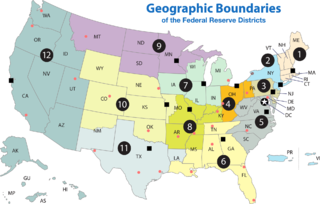
A Federal Reserve Bank is a regional bank of the Federal Reserve System, the central banking system of the United States. There are twelve in total, one for each of the twelve Federal Reserve Districts that were created by the Federal Reserve Act of 1913. The banks are jointly responsible for implementing the monetary policy set forth by the Federal Open Market Committee, and are divided as follows:

The Bank of Japan is the central bank of Japan. The bank is often called Nichigin (日銀) for short. It has its headquarters in Chūō, Tokyo.

The Reserve Bank of India (RBI) is India's central bank, which controls the issue and supply of the Indian rupee. RBI is the regulator of entire Banking in India. RBI plays an important part in the Development Strategy of the Government of India.
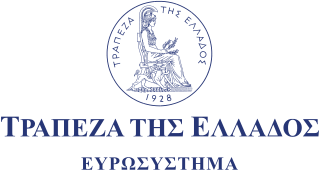
The Bank of Greece is the central bank of Greece. Its headquarters is located in Athens on Panepistimiou Street, but it also has several branches across the country. It was founded in 1927 and its operations started officially in 1928. The building that currently houses its headquarters was completed ten years later in 1938.

The Chair of the Board of Governors of the Federal Reserve System is the head of the Federal Reserve, which is the central banking system of the United States. The position is known colloquially as "Chair of the Fed" or "Fed Chair". The chair is the "active executive officer" of the Board of Governors of the Federal Reserve System. The chair reports to the United States Congress twice a year on progress towards the Fed’s responsibilities and monetary policy objectives, which are "maximum employment, stable prices, and moderate long-term interest rates."
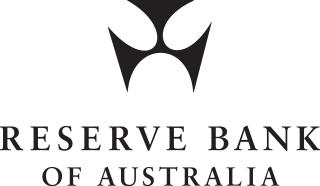
The Reserve Bank of Australia (RBA) is Australia's central bank and banknote issuing authority. It has had this role since 14 January 1960, when the Reserve Bank Act 1959 removed the central banking functions from the Commonwealth Bank.
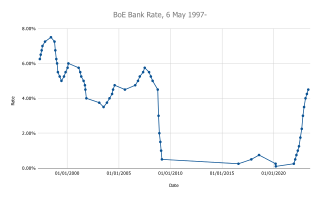
The Monetary Policy Committee (MPC) is a committee of the Bank of England, which meets for three and a half days, eight times a year, to decide the official interest rate in the United Kingdom.

Bangladesh Bank is the central bank of Bangladesh and is a member of the Asian Clearing Union.
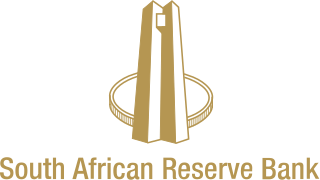
The South African Reserve Bank (SARB) is the central bank of South Africa. It was established in 1921 after Parliament passed an act, the "Currency and Bank Act of 10 August 1920", as a direct result of the abnormal monetary and financial conditions which World War I had brought. The SARB was only the fourth central bank established outside the United Kingdom and Europe, the others being the United States, Japan and Java. The earliest suggestions for the establishment of the Central Bank in South Africa date back to 1879. A select committee, consisting of ten members of Parliament was established on 31 March 1920 to examine the benefits to the national interest of the establishing of the central bank.

The Bank of Canada is a Crown corporation and Canada's central bank. Chartered in 1934 under the Bank of Canada Act, it is responsible for formulating Canada's monetary policy, and for the promotion of a safe and sound financial system within Canada. The Bank of Canada is the sole issuing authority of Canadian banknotes, provides banking services and money management for the government, and loans money to Canadian financial institutions. The contract to produce the banknotes has been held by the Canadian Bank Note Company since 1935.
Haravu Venkatanarasimha Varadaraja "H. V. R. " Iyengar CIE, ICS was the sixth Governor of the Reserve Bank of India from 1 March 1957 to 28 February 1962.

The Central Bank of Bosnia and Herzegovina is the central bank of Bosnia and Herzegovina, located in the capital city, Sarajevo.

Mark Joseph CarneyOC is an economist and banker who served as the Governor of the Bank of England from 2013 to 2020. He holds Canadian, British and Irish citizenship and was Chairman of the Financial Stability Board from 2011 to 2018.

The National Bank of Serbia is the central bank of Serbia. Founded in 1884, the responsibilities of the bank are: monetary policy, sole issuer of Serbian banknotes and coins, protection of price stability and promotion of stability of the financial system within Serbia. The bodies of the NBS are the Executive Board, the Governor and the Council of the Governor.
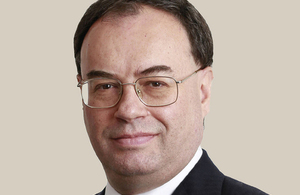
Andrew John Bailey is a British central banker who has been Governor of the Bank of England since 16 March 2020.

C. Rangarajan or Chakravarthi Rangarajan is an Indian economist, a former Member of Parliament and 19th Governor of the Reserve Bank of India. He is the former Chairman of the Prime Minister's Economic Advisory Council, he resigned the day the UPA lost power. He is also the Chairman of the Madras School of Economics; former President of the Indian Statistical Institute; the Founding Chairman of the CR Rao Advanced Institute of Mathematics, Statistics and Computer Science; and former Chancellor of the University of Hyderabad.
References
- 1 2 "Governors and Deputy Governors of the Bank Since its Inception". www.bog.gov.gh. Retrieved 2 August 2013.
| Government offices | ||
|---|---|---|
| Preceded by Alfred Eggleston | Governor of Bank of Ghana 1959–1962 | Succeeded by W.M.Q. Halm |
| This Ghanaian biographical article is a stub. You can help Wikipedia by expanding it. |